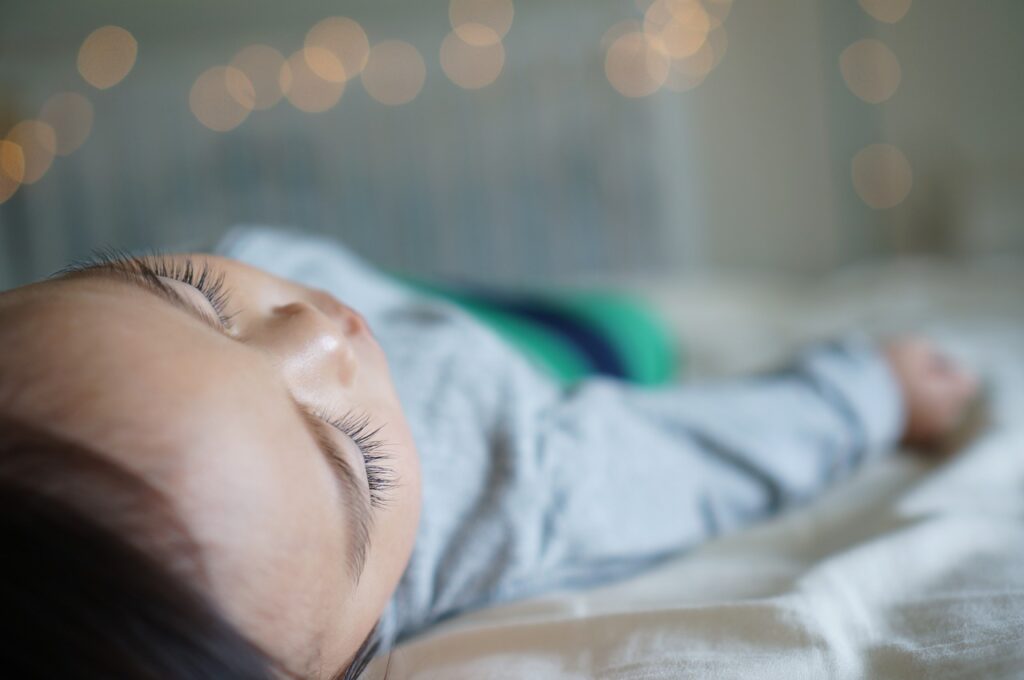
Sleep is a very popular topic amongst parents of infants and toddlers. Those little guys have lots of energy during the day, so if you’re not getting a lot of sleep at night, keeping up with them can be even more taxing.
While a number of factors affect anything in our physiological processing, sensory processing seems to have its own role in many of our daily activities. Based on the finding of this study, it seems sleep may be amongst those things. The authors interestingly looked at data on sleep and sensory processing, comparing a relationship both at an isolated point of time as well as a predictive relationship between the two.
Read on to see what sensory systems they found impacted sleep habits as well as what a child’s sleep habits as a 6 month old had to do with their sensory processing as a 2.5 year old.
Journal American Journal of Occupational Therapy (SNIP 1.121)
Article Title: Sleep and Sensory Processing in Infants and Toddlers: A Cross-Sectional and Longitudinal Study
- 1A Systematic review of homogeneous RCTs
- 1B Well-designed individual RCT
- 2A Systematic review of cohort studies
- 2B Individual prospective cohort study, low quality RCT, ecological studies; and two-group, non-randomized studies
- 3A Systematic review of case control studies
- 3B Individual retrospective case-control studies; one-group, non-randomized pre-post test study; cohort studies
- 4 Case series (and low-quality cohort and case control study)
- 5 Expert opinion without explicit critical appraisal
Methods Child were recruited from a sample of children participating in a larger randomized control trial. That study investigated the difference between families receiving additional education on a variety of topics and how it might impact weight gain for children birth to 5.
Families of 160 children participated in the study.
Questionnaires Parents completed questionnaires on their children’s sleep habits at 6 months, 1 year, 2 years and 2.5 years old. They also completed a questionnaire to provide information about their children’s sensory processing characteristics only at 2.5 years old.
Sleep questionnaires asked about:
- Overnight sleep duration
- Number of times a child woke up during the night
- How long their child takes to fall asleep
- If mothers’ characterized their children’s sleep habits as problematic
Parents completed the Sensory Processing Measure-Preschool home form. This assesses:
- Vision
- Hearing
- Touch
- Body awareness
- Balance and motion
- Praxis (planning and ideas)
- Balance and motion
Findings
Comparing Sleep & Sensory Scores at the 2.5 Year Mark

Researchers analyzed the data on sensory processing and sleep that parents completed at the 2.5 year mark for their children to assess potential relationship between the two factors. They found that if children took 10 additional minutes to fall asleep, their sensory scores in the area of vision and touch indicated more sensitivity (Appleyard, K., Schaughency, E., Taylor, B., Sayers, R., Haszard, J., Lawrence, J., . . . Galland, B. 2020, p. 5).
They also found that if children’s parents rated their child’s sleep habits as more “problematic” by one point on rating, these children also had higher scores in the social participation area, indicating more trouble with social participation.
Assessing the Impact of Sleep Habits at 6 Months & Sensory Scores by 2.5 Year
Children who slept for shorter amounts of time as a 6 month old demonstrated poorer scores in the Social Participation area of the Sensory Processing Measure as 2.5 year olds (Appleyard, K. et al 2020, p. 5).
Those children who took longer to fall asleep as 6 months old had sensory scores that indicated higher sensitivity in the area of hearing as 2.5 year olds.

Things to Consider
Researchers listed limitations to include that only parent report served as the data to assess these patterns. Additionally, data was only collected for sleep at night. The investigators mentioned that sleep during the day may also need to be considered when assessing a child’s sleep patterns. Also of note is that it is possible that at some time during the study period of 2.5 years, children may have had an underlying neuropsychological condition although the study was labeled as “typically developing children.” Finally, the sample from which the authors drew was largely of European descent who were healthy and had a good socioeconomic standing.
References
Appleyard, K., Schaughency, E., Taylor, B., Sayers, R., Haszard, J., Lawrence, J., . . . Galland, B. (2020). Sleep and sensory processing in infants and toddlers: A cross-sectional and longitudinal study. American Journal of Occupational Therapy, 74, 7406205010. https://doi.org/10.5014/ajot.2020.038182
